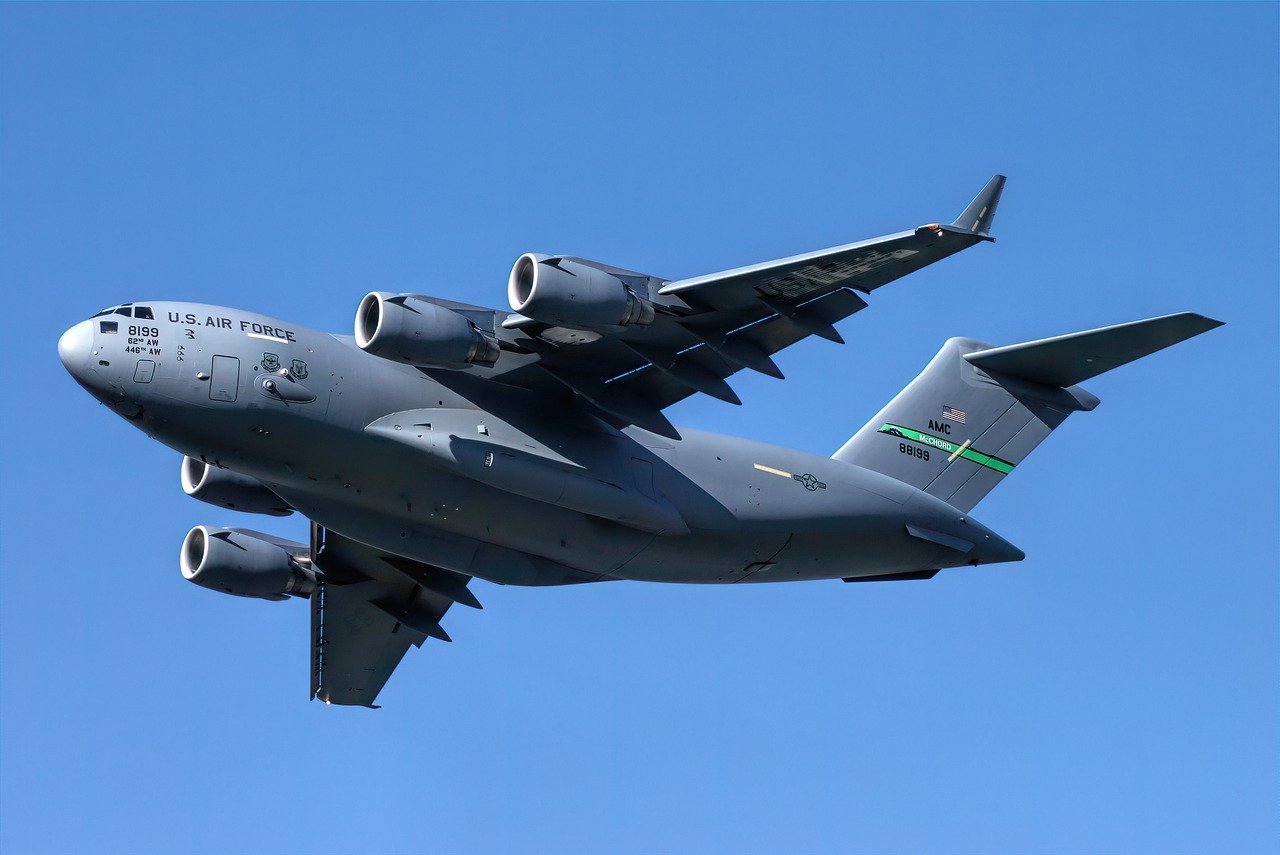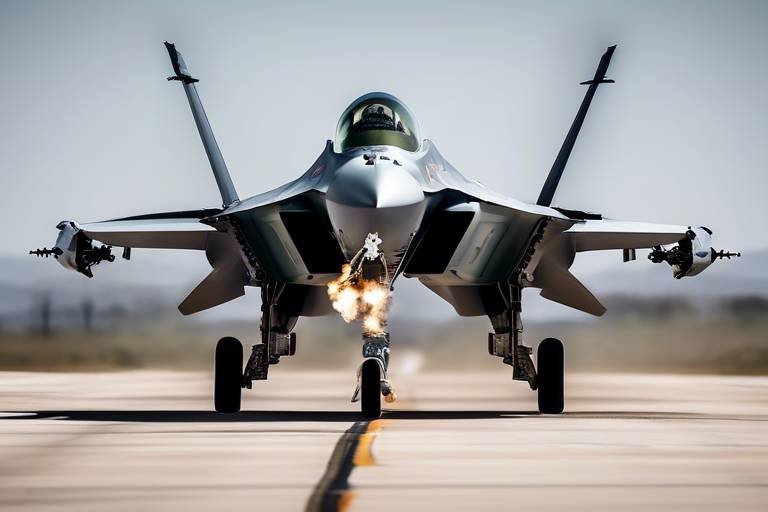Understanding the Impact of Defense Policies on Global Security
In today's interconnected world, the significance of defense policies cannot be overstated. They serve as the backbone of a nation's approach to safeguarding its interests, maintaining sovereignty, and ensuring stability in an increasingly volatile global landscape. At the heart of this discussion is the question: how do these policies shape not just national security, but also the intricate web of international relations? From military alliances to peacekeeping missions, defense policies are the tools through which countries navigate the complex dynamics of global security.
To grasp the full impact of defense policies, we must first understand their formulation. These policies are typically crafted through a combination of political, economic, and social factors. Governments often assess threats, both internal and external, and then prioritize their defense strategies accordingly. For example, a nation that perceives a rising military power in its vicinity may choose to bolster its own defense capabilities or seek alliances with other countries. This proactive approach can lead to enhanced security but may also provoke tensions with neighboring states.
The implications of defense policies extend far beyond the borders of individual nations. They play a crucial role in shaping global security dynamics. When countries collaborate through military alliances, they create a framework for collective security that can deter aggression and promote stability. Conversely, when nations pursue unilateral defense strategies, it can lead to arms races and increased tensions. Thus, understanding the balance between cooperation and competition in defense policies is essential for comprehending the broader implications for peace and conflict around the world.
Moreover, defense policies are not static; they evolve in response to emerging threats. The rise of cyber warfare, for instance, has prompted nations to reevaluate their defense strategies. As technology advances, the battlefield has expanded beyond traditional military confrontations to include cybersecurity as a vital component of national defense. This shift necessitates a reevaluation of how countries allocate resources and develop capabilities to address these new forms of warfare.
In summary, the impact of defense policies on global security is profound and multifaceted. They shape national security strategies, influence international alliances, and adapt to emerging threats. As we delve deeper into specific defense policies and their implications, it becomes clear that understanding these dynamics is crucial for fostering peace and stability in our interconnected world.
- What are defense policies? Defense policies are strategic frameworks established by nations to safeguard their sovereignty, interests, and security.
- How do defense policies influence international relations? They determine how countries interact, collaborate, or compete with one another, shaping the global security landscape.
- Why are military alliances important? Military alliances foster cooperation among nations, enhance collective security, and can deter potential aggressors.
- What role does cybersecurity play in modern defense? Cybersecurity is increasingly critical as nations face threats in the digital realm, requiring integrated defense strategies.

The Role of Defense Policies in National Security
National security is a multifaceted concept that encompasses various elements, but at its core, defense policies play a critical role in shaping how a nation protects itself and its interests. These policies are not merely bureaucratic documents; they are the backbone of a country's strategy to safeguard its sovereignty, maintain territorial integrity, and ensure the safety of its citizens. When we talk about defense policies, we're delving into a realm where strategic foresight meets practical application, where governments must anticipate threats and respond accordingly.
Formulating effective defense policies requires a deep understanding of both domestic and international landscapes. Policymakers must consider a myriad of factors, including geopolitical dynamics, economic capabilities, and technological advancements. For instance, a country surrounded by potential adversaries may adopt a more aggressive defense posture, while a nation with strong diplomatic ties might lean towards cooperative security arrangements. This balancing act is essential because the implications of these policies ripple beyond borders, influencing global security dynamics.
Moreover, defense policies are not static; they evolve in response to changing threats and challenges. The emergence of non-state actors, cyber threats, and transnational terrorism has forced nations to rethink traditional defense strategies. In this context, defense policies must be adaptable and forward-thinking. For example, integrating cybersecurity measures into national defense strategies is now paramount. Countries are investing heavily in cyber capabilities to protect critical infrastructure and respond to cyber-attacks that could disrupt national security.
To illustrate the importance of defense policies, let’s consider a few key components:
- Resource Allocation: Defense policies dictate how a nation allocates its resources, including military funding, personnel, and technology. This allocation is crucial for maintaining a robust defense posture.
- Strategic Alliances: These policies often determine the nature of alliances and partnerships, influencing how countries work together to address common threats.
- Public Perception: Effective communication of defense policies can shape public perception and support for national security initiatives, which is vital for democratic accountability.
In summary, the role of defense policies in national security cannot be overstated. They are essential for protecting a nation's interests and responding to emerging threats. As the world becomes increasingly interconnected and complex, the need for robust and adaptable defense policies will only grow. Nations that recognize this and invest in comprehensive strategies will be better positioned to navigate the challenges of the future.
- What are defense policies? Defense policies are strategic guidelines that govern how a nation protects itself from threats, including military strategies, resource allocation, and international alliances.
- Why are defense policies important for national security? They provide a framework for safeguarding a nation's sovereignty, addressing emerging threats, and ensuring the safety of citizens.
- How do defense policies adapt to new threats? Defense policies evolve by incorporating new technologies, addressing non-traditional threats like cyber warfare, and forming strategic alliances.

Global Military Alliances and Their Influence
When we talk about global security, it's impossible to overlook the profound impact of military alliances. These alliances act like a web, intricately connecting nations and shaping their interactions on the world stage. Think of them as a team of superheroes, each bringing unique powers to the table, working together to tackle threats that no single nation could face alone. The dynamics of these alliances can foster cooperation, but they can also lead to tension and conflict, depending on the circumstances.
One of the most prominent examples of such an alliance is the North Atlantic Treaty Organization (NATO). Formed in 1949, NATO was established to provide collective defense against the Soviet Union during the Cold War. Today, its role has evolved, focusing on a broader spectrum of security challenges, including terrorism and cyber threats. NATO's strategic objectives revolve around ensuring peace and stability in Europe, which is crucial given the region's historical volatility.
However, alliances like NATO do not exist in a vacuum. Their influence extends beyond their member states. For instance, NATO has engaged in partnerships with various non-member countries, fostering a sense of global unity in the face of common threats. These collaborations are not merely formalities; they are vital for enhancing military capabilities and sharing intelligence, which ultimately contributes to international stability.
To illustrate the significance of military alliances, consider the following table that outlines some key alliances and their objectives:
| Alliance | Year Established | Main Objectives |
|---|---|---|
| NATO | 1949 | Collective defense, crisis management, cooperative security |
| Shanghai Cooperation Organization (SCO) | 2001 | Regional security, economic cooperation, cultural exchange |
| Collective Security Treaty Organization (CSTO) | 2002 | Collective defense, military cooperation among member states |
While military alliances are essential for promoting security, they can also create geopolitical tensions. For instance, the expansion of NATO has been viewed with suspicion by countries like Russia, leading to a complex relationship that can sometimes escalate into conflicts. This delicate balance is a reminder that alliances are not just about shared interests; they can also reflect historical grievances and power struggles.
In conclusion, global military alliances serve as both a shield and a sword in the realm of international relations. They provide nations with the means to safeguard their interests while simultaneously presenting challenges that can lead to misunderstandings and conflicts. As the world continues to change, the influence of these alliances will undoubtedly evolve, making it essential for nations to navigate these waters carefully.
- What is the main purpose of military alliances? Military alliances aim to enhance collective security among member nations, allowing them to respond effectively to threats.
- How do military alliances affect global politics? They can foster cooperation and peace but can also lead to tensions and conflicts, depending on geopolitical interests.
- Are there any downsides to military alliances? Yes, they can create divisions and rivalries among nations, especially when one alliance perceives another as a threat.

The North Atlantic Treaty Organization (NATO)
The North Atlantic Treaty Organization, commonly known as NATO, plays a pivotal role in maintaining peace and stability in Europe and beyond. Established in 1949, NATO was born out of the need for collective defense against potential threats, particularly during the Cold War era. Today, it stands as a testament to international cooperation, uniting 31 member countries under a common goal: to ensure the security of its members through mutual defense and strategic collaboration.
NATO's influence extends far beyond military might; it is also about fostering diplomatic ties and promoting democratic values. The organization's strategic initiatives are designed to respond to a myriad of challenges, including traditional military threats and modern security issues like cyber warfare and terrorism. As the world evolves, so too does NATO's approach to ensuring global security, making it a dynamic player on the international stage.
One of the cornerstones of NATO's strategy is its principle of collective defense, encapsulated in Article 5 of the North Atlantic Treaty. This article asserts that an armed attack against one or more NATO members is considered an attack against all. This collective security guarantee not only deters potential aggressors but also reinforces the bond among member states, creating a sense of unity and shared responsibility. The implications of Article 5 are profound, as they shape military strategies and defense postures across the alliance.
Moreover, NATO's partnerships extend beyond its European base. The organization has established cooperative relationships with various non-member countries, enhancing global security and stability. These partnerships are crucial for addressing transnational threats and fostering interoperability among diverse military forces. For instance, NATO collaborates with nations in the Mediterranean, the Middle East, and even Asia, facilitating joint exercises and sharing intelligence to combat common challenges.
In recent years, NATO has adapted its strategies to address emerging threats, including hybrid warfare and cyber attacks. The organization recognizes that modern conflicts often blur the lines between conventional and unconventional warfare, necessitating a comprehensive approach to security. This adaptability is vital as NATO continues to evolve in response to the changing global landscape, ensuring that it remains relevant in a world where threats can arise from unexpected quarters.
In summary, NATO's role in maintaining peace and stability is multifaceted. From its foundational principle of collective defense to its strategic partnerships and adaptability to emerging threats, NATO stands as a pillar of global security. As we navigate an increasingly complex world, understanding NATO's significance and operations becomes essential for grasping the broader dynamics of international relations.
- What is NATO? NATO is a military alliance formed in 1949, consisting of 31 member countries focused on collective defense and security cooperation.
- How does Article 5 work? Article 5 states that an attack on one member is an attack on all, ensuring mutual defense among member states.
- Why are partnerships important for NATO? Partnerships extend NATO's reach and enhance global security by fostering collaboration with non-member countries.
- How has NATO adapted to modern threats? NATO has evolved to address challenges like cyber warfare and terrorism, implementing comprehensive strategies to ensure member security.

Collective Defense and Article 5
The concept of collective defense is perhaps one of the most significant tenets of NATO's framework, encapsulated in Article 5 of the North Atlantic Treaty. This article states that an armed attack against one or more NATO member states is considered an attack against all. Imagine a neighborhood watch: if one house is threatened, everyone rallies to protect it. Similarly, Article 5 is designed to deter aggression by ensuring that any attack on a member is met with a unified response. This principle not only strengthens military alliances but also fosters a sense of security among member nations, encouraging them to cooperate more closely in defense matters.
Since its inception in 1949, Article 5 has only been invoked once, following the tragic events of September 11, 2001. This unprecedented call to arms demonstrated NATO's commitment to mutual defense and showcased the alliance's ability to adapt to new threats. The invocation led to a series of military operations, including the deployment of NATO forces in Afghanistan, which marked a significant shift in the alliance's focus from collective defense in Europe to crisis management and expeditionary operations around the globe.
However, the implications of Article 5 extend beyond mere military action. It serves as a diplomatic tool that promotes stability and peace in the region. By assuring member states that they are not alone in facing threats, NATO encourages nations to invest in their own defense capabilities, knowing that their allies will stand by them in times of crisis. This mutual assurance helps to maintain a balance of power, which is crucial for global security.
Despite its foundational role in NATO, Article 5 is not without challenges. The diversity of member states' military capabilities and strategic interests can sometimes lead to differing interpretations of what constitutes an armed attack. For instance, a cyberattack may not be viewed as a traditional armed attack, leading to debates about the appropriate response. As such, NATO has been working to modernize its understanding of collective defense to include emerging threats, such as cyber warfare and hybrid tactics, which blur the lines of conventional conflict.
In summary, Article 5 is more than just a clause; it embodies the spirit of unity and collective responsibility among NATO members. As global security dynamics evolve, so too must the interpretations and applications of collective defense, ensuring that the alliance remains a formidable force against any potential aggressors.
- What is Article 5 of NATO? Article 5 is the collective defense clause which states that an attack against one member is considered an attack against all.
- Has Article 5 ever been invoked? Yes, it was invoked for the first time after the September 11 attacks in 2001.
- What are the challenges related to Article 5? Challenges include differing interpretations of what constitutes an armed attack and adapting to new forms of threats, such as cyberattacks.
- How does Article 5 promote global security? It fosters a sense of security among member states and encourages cooperation and investment in defense capabilities.

Partnerships Beyond Europe
When we think of NATO, our minds often drift to the European landscape, where member nations collaborate to ensure mutual defense and stability. However, the alliance's reach extends far beyond the borders of Europe, establishing strategic partnerships that play a pivotal role in global security. These partnerships are not merely formalities; they are dynamic relationships that adapt to the changing tides of international relations and security threats. Countries such as Australia, Japan, and South Korea have forged strong ties with NATO, contributing to a broader vision of peace and security.
These partnerships are crucial for several reasons. First, they enhance interoperability among military forces, allowing for coordinated responses to crises that may arise in various regions. For example, joint military exercises and training programs with NATO allies can significantly improve the effectiveness of operations in conflict zones. Second, they foster a sense of collective responsibility, as nations work together to tackle common threats, such as terrorism and cyber attacks. This collaboration is not just about sharing resources; it's about sharing intelligence and strategies that can lead to more effective outcomes.
Moreover, NATO's partnerships with non-member countries often involve significant diplomatic engagement. Through initiatives like the NATO Partnership for Peace (PfP), nations can participate in joint training and exercises, which not only bolster their military capabilities but also strengthen political ties. This engagement can lead to a more stable international environment, as nations become more invested in each other's security. In fact, the PfP program has expanded to include over 40 countries, showcasing NATO's commitment to fostering global security.
Additionally, NATO's partnerships extend into regions where traditional military alliances may not suffice. For instance, in the Middle East and North Africa, NATO collaborates with regional organizations and countries to address security challenges that threaten stability. By engaging with nations like Tunisia and Morocco, NATO helps to build local capacities to manage security issues effectively. This proactive approach not only addresses immediate threats but also contributes to long-term stability in these regions.
In conclusion, NATO's partnerships beyond Europe are vital for maintaining global security. They create a network of alliances that not only enhance military readiness but also promote diplomatic relations and collaborative problem-solving. As the world continues to face complex security challenges, the importance of these partnerships will only grow, reminding us that in the realm of defense, collaboration is key to success.

The Role of United Nations Peacekeeping Missions
When we think about global peace and security, the United Nations Peacekeeping Missions often come to mind as a beacon of hope in conflict-ridden areas. These missions are more than just a presence; they embody a commitment to maintaining peace and fostering stability in regions where tensions run high. The UN deploys peacekeeping forces to help manage conflicts, protect civilians, and assist in the implementation of peace agreements. But what exactly does this entail, and how effective are these missions in achieving their goals?
At the heart of every peacekeeping mission lies a complex web of challenges and opportunities. For instance, peacekeepers are tasked with monitoring ceasefires, disarming combatants, and facilitating humanitarian aid. They often operate in environments where the threat of violence is ever-present, making their role not only crucial but also perilous. The effectiveness of these missions can vary significantly depending on the context, the mandate given to the peacekeepers, and the cooperation of local actors.
One of the key strengths of UN peacekeeping missions is their ability to bring together a diverse array of nations under a common goal. This international collaboration fosters a sense of shared responsibility and can lead to more sustainable peace. However, it also raises questions about the political will of member states and their commitment to supporting these missions. For example, the effectiveness of peacekeeping can be hindered by a lack of resources or insufficient troop contributions from member states.
A significant aspect of peacekeeping missions is their adaptability to the evolving nature of conflicts. The UN has increasingly recognized the need to address not just the symptoms of conflict but also the underlying causes. This has led to a more comprehensive approach that includes development initiatives, human rights advocacy, and community engagement. By addressing these root issues, peacekeeping missions can help to build a more resilient society capable of sustaining peace long after the peacekeepers have left.
However, the road is not without its bumps. Peacekeeping missions face numerous challenges, including:
- Resource Constraints: Many missions operate with limited funding and personnel, impacting their effectiveness.
- Hostile Environments: Peacekeepers often find themselves in situations where they are not welcomed or are actively targeted.
- Complex Mandates: The scope of what peacekeepers are expected to achieve can sometimes be unrealistic, leading to challenges in implementation.
Despite these challenges, the impact of UN peacekeeping missions can be profound. They have played pivotal roles in stabilizing regions such as East Timor, Sierra Leone, and more recently, in South Sudan. The presence of peacekeepers can deter violence, create safe spaces for dialogue, and ultimately pave the way for political solutions. It's a tough job, but someone has to do it—and the UN peacekeepers rise to that challenge time and again.
In conclusion, while the effectiveness of UN peacekeeping missions can vary, their role in promoting global peace and security is undeniable. They serve as a reminder that even in the darkest times, there is a collective effort to restore harmony and rebuild nations. The journey of peace is long and fraught with obstacles, but with continued support and adaptation, these missions can make a lasting difference.
- What are the main objectives of UN peacekeeping missions?
The primary objectives include maintaining peace and security, protecting civilians, and supporting the implementation of peace agreements. - How are peacekeepers selected and deployed?
Peacekeepers are contributed by member states and deployed based on the specific needs of the mission. - What challenges do peacekeeping missions face?
Challenges include resource constraints, hostile environments, and complex mandates that can hinder effectiveness. - How do peacekeeping missions adapt to modern conflicts?
The UN has shifted towards a more comprehensive approach that includes addressing underlying causes of conflict and engaging local communities.

Emerging Threats and Defense Policy Adaptation
In today's rapidly changing world, the landscape of threats that nations face is evolving at an unprecedented pace. The traditional notions of warfare and conflict are being challenged by a myriad of emerging threats that require a dynamic and adaptable approach to defense policy. From cybersecurity breaches to the menace of terrorism, countries are finding that their existing strategies are often inadequate in addressing these new challenges. This section delves into how nations are rethinking their defense policies to not only respond to these threats but also to anticipate future challenges.
One of the most pressing issues is the rise of cyber threats. As technology advances, so too do the tactics employed by malicious actors. Cyberattacks can disrupt critical infrastructure, steal sensitive information, and even manipulate public opinion. In response, nations are increasingly integrating cyber capabilities into their defense frameworks. This integration means not only enhancing the technical defenses of government and military systems but also fostering a culture of cybersecurity awareness among citizens and businesses. For instance, countries like Estonia have pioneered initiatives to bolster their cyber resilience, serving as a model for others.
Moreover, the global nature of the internet means that no nation is immune to these threats. Cybersecurity is now a matter of national security, and countries are forming alliances to share intelligence and best practices. This collaborative approach is reminiscent of traditional military alliances but is uniquely tailored to the digital age. The establishment of international norms for state behavior in cyberspace is also gaining traction, with discussions taking place in forums like the United Nations to establish rules of engagement.
On the other hand, the specter of terrorism continues to loom large. The strategies to combat this threat have evolved significantly over the past two decades. Nations are now focusing on a comprehensive approach that includes not only military action but also diplomatic efforts, economic development, and community engagement. The understanding is that to effectively combat terrorism, it is crucial to address the underlying factors that fuel extremism. For example, initiatives aimed at improving education and economic opportunities in vulnerable regions can mitigate the allure of radicalization.
As we look at the various strategies employed globally, it's clear that nations are adapting their defense policies in several key areas:
- Intelligence Sharing: Countries are enhancing their intelligence-sharing capabilities to better anticipate and thwart terrorist plots.
- Counter-Radicalization Programs: Many nations are implementing programs aimed at preventing radicalization, focusing on youth engagement and community outreach.
- Legislative Measures: Governments are enacting laws that facilitate quicker responses to emerging threats, including cyber laws that address online hate speech and incitement.
In conclusion, the adaptation of defense policies in response to emerging threats is not just a necessity but a strategic imperative. As nations navigate this complex landscape, the ability to remain flexible and innovative will be key in ensuring national and global security. The interplay between traditional military strategies and modern threats like cyber warfare and terrorism will continue to shape the future of defense policies worldwide.
Q1: What are the main emerging threats to global security?
A1: The main emerging threats include cybersecurity breaches, terrorism, and the proliferation of advanced technologies that can be used for malicious purposes.
Q2: How are countries adapting their defense policies to address these threats?
A2: Countries are enhancing their cyber capabilities, sharing intelligence, implementing counter-radicalization programs, and enacting new legislation to respond more effectively to emerging threats.
Q3: Why is cybersecurity considered a national security issue?
A3: Cybersecurity is crucial for protecting critical infrastructure, sensitive information, and maintaining public trust, making it a vital component of national security.

The Impact of Cybersecurity on Defense Strategies
In today's rapidly evolving digital landscape, the importance of cybersecurity in shaping defense strategies cannot be overstated. As nations increasingly rely on technology for their military operations and communication, the threat of cyber attacks has emerged as a formidable challenge. Imagine a world where a single keystroke can disrupt national security; that’s the reality we face. Cybersecurity is not just an IT issue; it’s a fundamental component of national defense that influences how countries protect their interests.
Governments worldwide are recognizing that traditional defense mechanisms must be complemented by robust cybersecurity measures. This shift is partly due to the rise in cyber warfare tactics, where state and non-state actors exploit vulnerabilities in digital infrastructures. For instance, the 2020 SolarWinds cyberattack demonstrated how a sophisticated breach can compromise sensitive government data and disrupt critical operations. Such incidents have prompted nations to rethink their defense strategies, integrating cybersecurity into their national security frameworks.
Moreover, the integration of cyber capabilities into military strategies is not merely about defense but also about offense. Countries are now developing offensive cyber capabilities to deter potential aggressors. This dual approach—defensive and offensive—requires a comprehensive understanding of the cyber domain. Defense strategies must encompass not only the protection of physical assets but also the safeguarding of digital information and networks.
To illustrate the significance of cybersecurity in defense strategies, consider the following table that outlines key components of modern cybersecurity frameworks:
| Component | Description |
|---|---|
| Threat Intelligence | Gathering and analyzing information about potential cyber threats to anticipate and mitigate risks. |
| Incident Response | Developing protocols to respond swiftly to cyber incidents to minimize damage and recover operations. |
| Training and Awareness | Educating military personnel and government employees about cybersecurity best practices to reduce human error. |
| Collaboration | Working with international partners and private sectors to strengthen cybersecurity defenses. |
In addition to these components, countries are also focusing on enhancing their cyber resilience. This means not only defending against attacks but also ensuring that systems can recover quickly when breaches occur. For instance, nations are investing in redundant systems and backup protocols, much like a safety net that allows them to bounce back from cyber incidents without significant disruption. The idea is to create a layered defense that can withstand and adapt to various cyber threats.
Furthermore, the role of international cooperation in cybersecurity cannot be overlooked. Just as countries form military alliances to bolster their defense capabilities, similar partnerships are emerging in the realm of cybersecurity. Collaborative efforts such as information sharing, joint exercises, and coordinated responses to cyber threats are becoming increasingly common. These alliances not only enhance security but also foster trust among nations, which is vital in an age where digital borders are as significant as physical ones.
In conclusion, the impact of cybersecurity on defense strategies is profound and multifaceted. As the digital landscape continues to evolve, nations must adapt their defense policies to encompass the complexities of cyber threats. By integrating cybersecurity into their national security frameworks, countries can better protect their interests and ensure stability in an increasingly interconnected world.
- What is the primary focus of cybersecurity in defense strategies?
The primary focus is to protect national interests from cyber threats while ensuring the resilience of military and governmental operations.
- How do nations collaborate on cybersecurity?
Nations collaborate through information sharing, joint exercises, and establishing international agreements to enhance cybersecurity measures.
- Why is cyber resilience important?
Cyber resilience is crucial because it enables nations to recover quickly from cyber incidents, minimizing disruptions to critical operations.

Counterterrorism Strategies Worldwide
Counterterrorism has become a pressing priority for nations across the globe, as the threat of terrorism continues to evolve and pose significant challenges to security and stability. Countries are implementing a variety of strategies to combat this menace, each tailored to their unique contexts and threats. These strategies can be broadly categorized into several key approaches, including intelligence sharing, military intervention, community engagement, and legislative measures.
One of the most effective strategies in the fight against terrorism is intelligence sharing. Nations recognize that terrorism knows no borders, and as such, collaboration among intelligence agencies is crucial. For instance, countries within the Five Eyes alliance—comprising Australia, Canada, New Zealand, the United Kingdom, and the United States—actively share intelligence to thwart potential attacks. This cooperation enables them to identify and disrupt terrorist plots before they can be executed.
Another significant approach is military intervention. While controversial, military action has been employed in various contexts to dismantle terrorist organizations. For example, the international coalition against ISIS has demonstrated how military force, combined with local ground support, can lead to the degradation of a terrorist group’s capabilities. However, military solutions must be complemented by political and social strategies to ensure long-term stability in affected regions.
On the ground, community engagement plays a vital role in counterterrorism efforts. Many governments are recognizing the importance of building trust within communities to prevent radicalization. Initiatives aimed at promoting social cohesion, providing educational opportunities, and addressing grievances can significantly reduce the allure of extremist ideologies. Programs that involve local leaders and organizations often yield better results, as they foster a sense of ownership and responsibility among community members.
Additionally, nations are increasingly focusing on legislative measures to enhance their counterterrorism frameworks. This includes enacting laws that allow for the monitoring of potential terrorists, the freezing of assets linked to terrorist activities, and the establishment of legal frameworks for prosecuting individuals involved in terrorism. However, these measures must be balanced with the protection of civil liberties to maintain public trust and support.
To illustrate the diverse strategies employed worldwide, the following table summarizes some notable counterterrorism strategies from various countries:
| Country | Strategy | Description |
|---|---|---|
| United States | Intelligence Sharing | Collaboration among intelligence agencies to prevent attacks. |
| France | Military Intervention | Engagement in military operations against ISIS in the Middle East. |
| United Kingdom | Community Engagement | Programs aimed at preventing radicalization through local initiatives. |
| Australia | Legislative Measures | Laws to monitor and prosecute suspected terrorists. |
In conclusion, the fight against terrorism requires a multifaceted approach that incorporates intelligence sharing, military action, community engagement, and robust legislative frameworks. Each country must adapt these strategies to their specific circumstances, ensuring that they not only combat immediate threats but also address the underlying factors that contribute to radicalization and violence. As we move forward, it’s crucial for nations to collaborate and learn from each other’s experiences to create a safer world for all.
- What is the primary goal of counterterrorism strategies?
Counterterrorism strategies aim to prevent terrorist attacks, dismantle terrorist organizations, and address the root causes of extremism. - How do intelligence-sharing initiatives work?
Nations collaborate by exchanging information about potential threats, which helps in preemptively identifying and neutralizing terrorist plots. - Why is community engagement important in counterterrorism?
Building trust within communities can help prevent radicalization and encourage local populations to report suspicious activities. - What role does military intervention play in counterterrorism?
Military intervention can be effective in dismantling terrorist groups, but it must be accompanied by political and social strategies for lasting peace.
Frequently Asked Questions
- What are defense policies and why are they important?
Defense policies are strategic guidelines that govern a nation's military actions and resource allocation. They are crucial because they protect a country's sovereignty, ensure national security, and help maintain stability in international relations. Without effective defense policies, nations could be vulnerable to external threats and conflicts.
- How do military alliances influence global security?
Military alliances, like NATO, play a significant role in shaping global security dynamics. They foster cooperation among member states, enhance collective defense capabilities, and deter potential aggressors. However, they can also create tensions with non-member countries, leading to complex geopolitical scenarios.
- What is NATO's Article 5 and its significance?
Article 5 of the NATO treaty is a collective defense clause that states an armed attack against one member is considered an attack against all. This principle is vital as it ensures mutual support among member nations, reinforcing their commitment to defend each other and deterring potential threats.
- What role do UN peacekeeping missions play in conflict resolution?
UN peacekeeping missions are deployed to maintain peace and security in conflict zones. They help to stabilize regions, protect civilians, and facilitate political processes. Despite facing various challenges, these missions are essential for promoting long-term peace and preventing the resurgence of conflict.
- How are defense policies adapting to emerging threats like cyberattacks?
As cyber threats become more prevalent, nations are integrating cybersecurity into their defense strategies. This includes developing cyber capabilities, enhancing intelligence sharing, and collaborating internationally to combat cybercrime, ensuring that they are prepared to address these evolving challenges.
- What are some common counterterrorism strategies employed globally?
Countries implement various counterterrorism strategies, including intelligence gathering, military operations, and community engagement programs. These approaches aim to disrupt terrorist networks, prevent attacks, and address the root causes of extremism, contributing to overall international security.



















